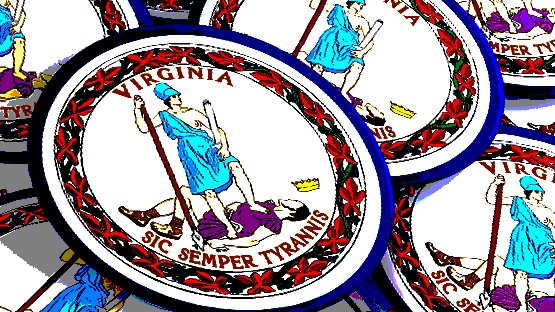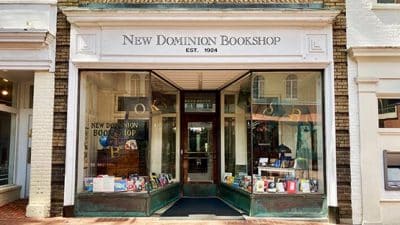
Although I lived in Harrisonburg for most of my childhood, I grew up in farming country and was used to the familiar sights of dairy cows, poultry houses, silos, big farm equipment and fields of some of the best sweet corn you’d ever want to eat. Even in the city, I grew up with the smell from the animal feed plants – a kind of dusty, corn-y smell – so we always knew we were in the midst of farm country.
I knew that agriculture was an essential economic driver in our area, and I often visited the farms of my church youth group members. My mother grew up on a farm and I used to hear stories about the family working together to produce traditional garden vegetables, lots of corn and raise chickens and a few dairy cows. When my grandfather died, they sold it and like so many families today, I lost that direct connection to a family farm.
Although I had the advantage of understanding where food comes, when I came to work for the Virginia Department of Agriculture and Consumer Services (VDACS) 18 years ago, I realized I didn’t fully understand the complexity, diversity and far-ranging economic importance of Virginia’s largest industry, agriculture. I also learned that today, only one percent of the U.S. population is directly involved in production agriculture, another word for farming.
Our friends at the Virginia Farm Bureau Federation realized this was true of many, if not most Virginians. That’s why they started Virginia’s Agriculture in the Classroom program years ago to help educate teachers about the importance of agriculture. The teachers taught their students and the students could teach their families. One of its programs is Virginia Agriculture Literacy Week.
After becoming Deputy Commissioner at VDACS, I read a book about Farmer Ben to children in the elementary school in Harrisonburg I attended as a child. I thought then that I wish someone had done that when I was in second grade. So now I read to a class or two every year during Ag Literacy Week, which this year is March 23 – 29.
This year I will read to two classes at Skipwith Elementary School in Henrico County. A fellow employee who will read at the same school is bringing a basket of multi-hued eggs from his flock – he very wisely will hard boil them first – and we will show each class a video of his son Jack with his chickens.
This week about 40 of our VDACS employees, many local Farm Bureau members and a couple of very special guests, Miss Virginia and First Lady Dorothy McAuliffe, will read to schools across Virginia. We read to school children so those who don’t have grandparents, cousins or uncles who farm will have a better understanding of where our food comes from.
One result of this activity is learning what children think about agriculture. Last year at a school in Richmond, one little girl seemed skeptical about hamburger coming from cows. She challenged me with this thought: “I don’t see how hamburger comes from cows because cows are SO big and hamburgers are so small.” I had never thought of it that way and I had to decide on the spot just how much information I wanted to give a first grader on how a live cow becomes a hamburger. (I went with “not too much.”)
One of our employees another year was with a class in the Tidewater area. They knew a lot about agriculture and she was very impressed until she asked them to list a few dairy products. They included milk, ice cream, butter, eggs, yogurt . . . . . Eggs? Every student nodded, yes, eggs. They knew that dairy products came from cows and eggs from chickens but still insisted eggs were a dairy product. The reason, they explained, is because you buy them in the dairy case.
That was a few years ago and I think perceptions have changed some since then. Many students now go to farmers’ markets, pick-your-own farms or roadside stands with their parents and realize that food doesn’t come from the back of the grocery store. We can thank the Buy Local movement in part for that change in attitude. But we have a long way to go, and that’s the reason behind Agriculture Literacy Week.
When we go to read a book, we answer students’ questions. Many people bring along show-and-tell items such as ears of corn or Virginia Grown posters, or take agriculture coloring books and activity sheets. This year some of our employees are holding contests for growing lettuce in the classroom and will host an ice cream party for the winning class.
We often send students home with one of our Virginia Agriculture Facts brochures and hope they will share them with their families. Through one student, we may be able to educate 3 or 4 people about Virginia agriculture: the fact that it is the state’s largest industry that contributes $52 billion to the economy each year; that one farmer in Virginia feeds 144 people around the world; that we export many agricultural products around the globe and that for the last several years we have set records for export that now total almost $3 billion per year.
One classroom at a time, our goal is to increase the basic literacy about agriculture among children and their families. Perhaps you can help us share agriculture’s story. For more information and more facts about Virginia agriculture, go toagintheclass.org/ and click on the Agriculture Literacy Week button, or go to our website at vdacs.virginia.gov/news/










